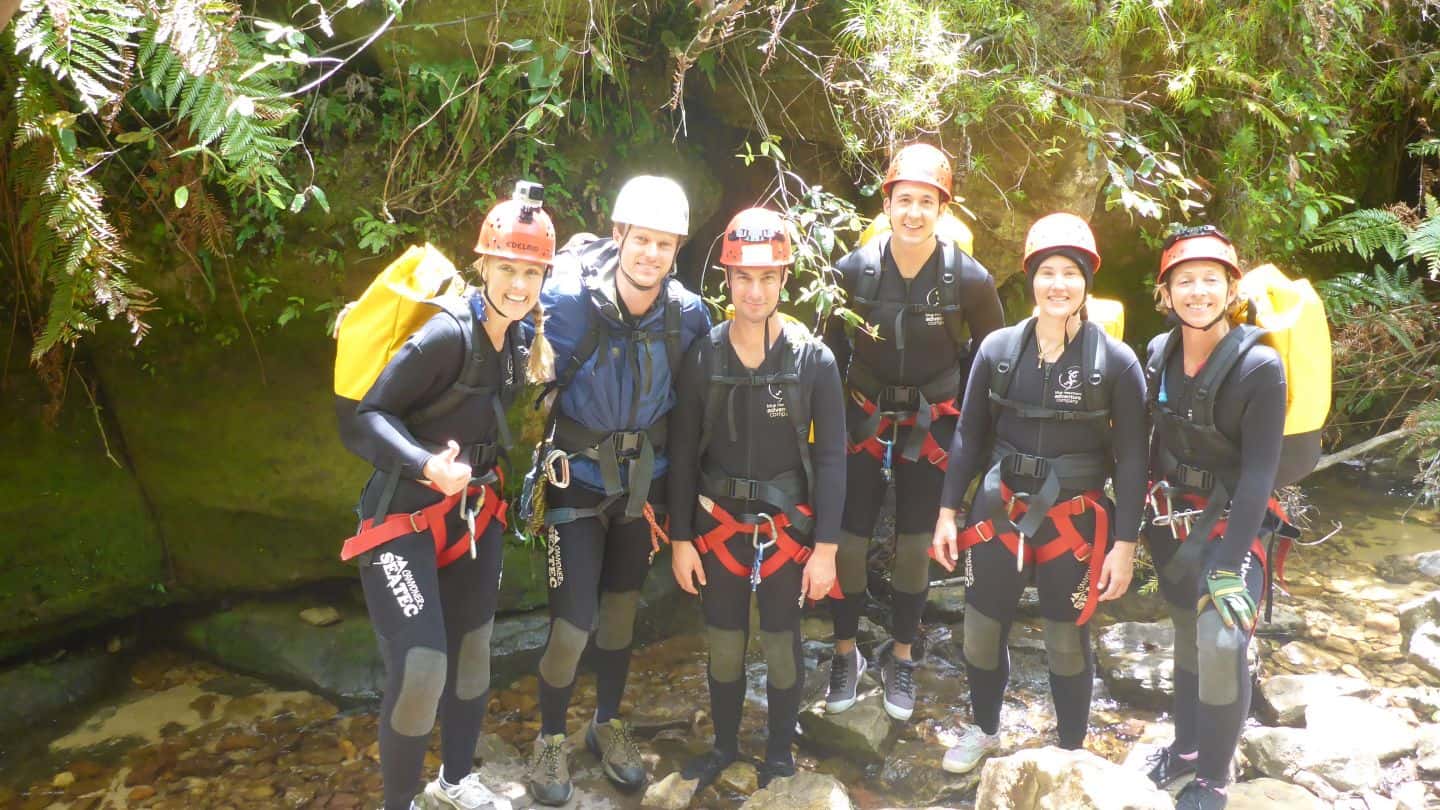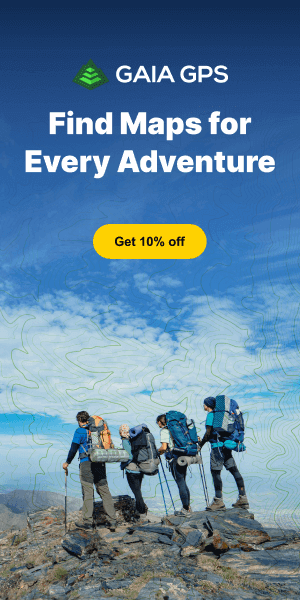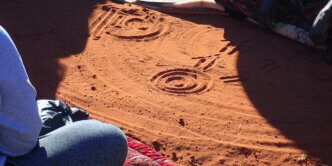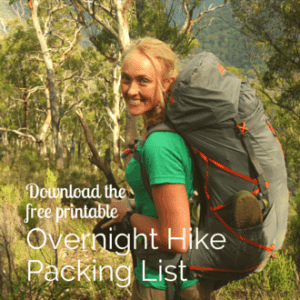Do you remember that feeling as a kid, of running along and the sense of utter freedom that it brought? I’ve often wondered why when we grow up, unless we’re a sporty type, we tend to stop running. It seems as though we somehow start to see it as a competitive style form of athletics, rather than the ability to undertake that very human desire of freedom and discovery.
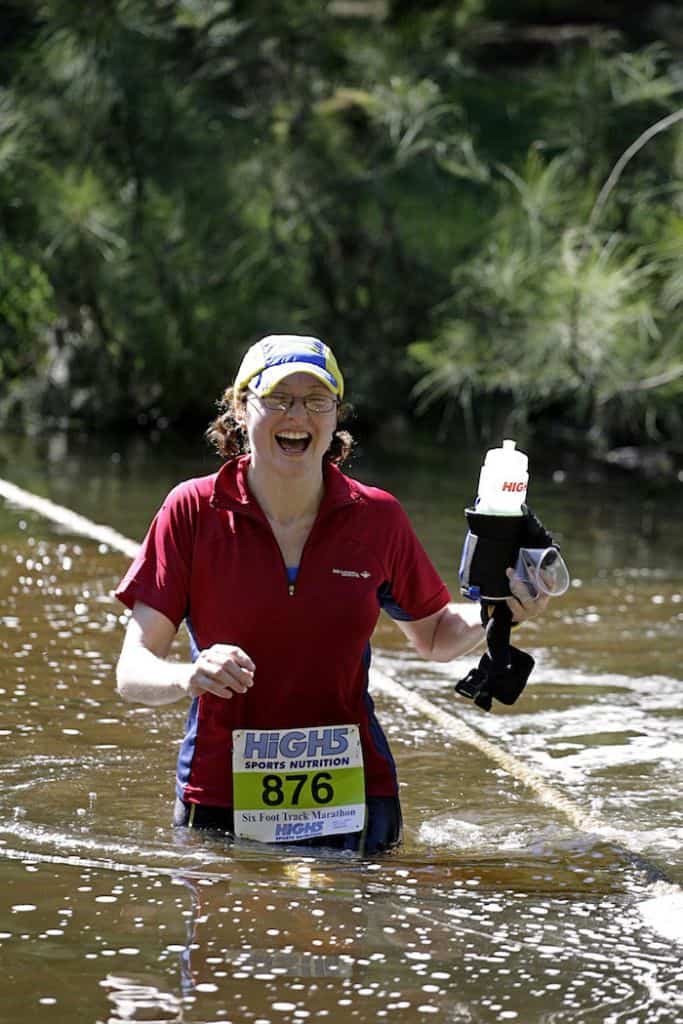
There’s really only a very small step from bushwalking/hiking to trail running and I’ve been inspired by friends and people like the lovely Jen Brown from Sparta Chicks, to look under the hood of trail running and take it for a test drive.
To help you out, I’ve asked all those tricky little, “How do I get started?”, questions of Jen.
How did you discover trail running and what do you love about it?
I started running in 2004 with a ‘standard’ loop on the roads around my neighbourhood. Early on, I noticed a dirt trail that went through a park and disappeared into the bush behind and I often wondered where it went. One day I decided to find out — and I have loved trail running ever since.
There are a few things I love about it. First, the fresh air. At the time I started running I was working as a lawyer so getting outside into fresh air was pretty rare. Even now, I don’t get outside nearly as much as I would like. Secondly, I love the mindfulness of trail running. You need to concentrate on what you’re doing. The moment you start thinking about the washing that’s piled up at home or what’s for dinner, chances are you’ll trip, stumble or even fall. So you need to be present. Plus it takes you to places most people will never see. What’s not to love about it? 🙂
What type of people get into trail running?
Honestly, every type! I know trail runners who are teenagers through to people in their 70s and 80s who still love to get out and explore the bush. The only prerequisite is a pair of shoes and a desire for adventure!
Can you speak about the community aspect of events and the sense of belonging to a strong tribe?
The strong community spirit is one of the most beautiful aspects of the sport.
Trail runners are very passionate people. They love trail running and they love sharing their passion with everyone! It doesn’t matter how fast you are (Caro says: I particularly like this bit!!) or how long you’ve been in the sport, get into a conversation with a trail runner and you’ll find someone who shares your passion and who is interested in what you do. There are very few egos in this sport which is refreshing; it’s just a community of people who love what they do and want others to discover how great it is too.
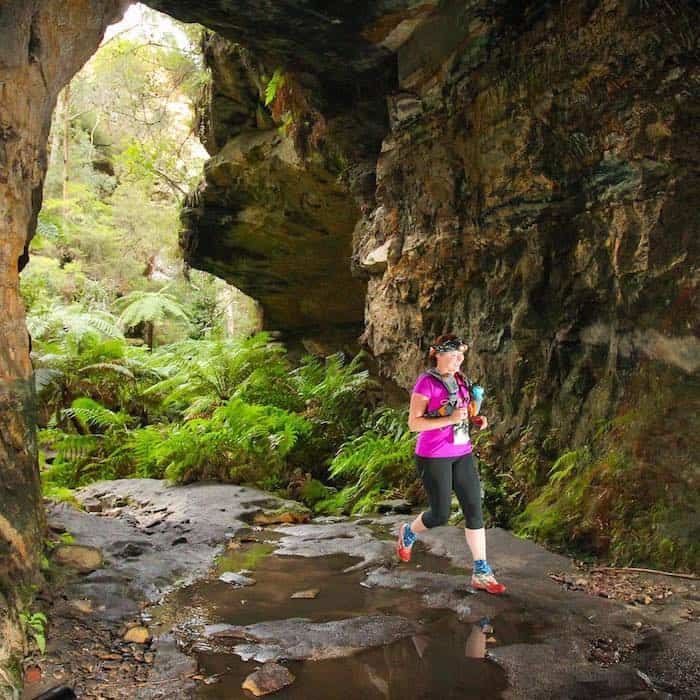
Do I have to be an expert runner to join events? Is there something for all levels of ability and fitness?
Absolutely not! There are races and events for all fitness levels and abilities. Even some of the parkun races around the country – like Lawson here in the Blue Mountains – are held on trails. It’s certainly not a sport reserved for ‘experts’ or ‘fast people’ – it’s a sport for all ages and fitness levels!
What type of shoes do I need to get started trail running?
Good question! My answer to this question always depends on (1) the type of trail you’re running on and (2) how much you want to spend.
Yes, there are specific trail running shoes which are designed to increase traction on the ground and protect your feet from rocky surfaces. And if you’re running on a very rocky and (what I would call) ‘technical’ trail, I’d certainly recommend them.
However if you are just starting out and running open, well-used fire trails through your local National Park, you can probably use your normal running shoes. That is, of course, until you’re addicted to the sport when you’ll want to buy all-the-gear.
What about first aid? Should I have a snake bandage stashed somewhere? How do I carry water? How much?
My number 1 rule of trail running is ‘safety first’. So I have a few strategies up my sleeve.
First, yes – carry a snake bandage with you, and (needless to say) know how to use it. It’s a handy piece of equipment because it can also be used to manage a twisted ankle (which is far more likely than coming off second-best in an encounter with a snake).
If you’re in Australia, download the Emergency + app onto your phone. It will directly connect you with Emergency Services and it provides your GPS coordinates so you can tell the operator your exact location (as opposed to ‘yeah, I’m somewhere down that trail that starts kinda, sorta near the trailhead…’).
Also, before you leave the house, let someone know where you are going and when to expect you home. I still send my husband an SMS when I leave the car or house, and when I return. And if he’s not in town, I’ll tell my parents or a friend. Don’t assume you’ll have phone reception in the unfortunate event of a problem.
In terms of water, it depends on how long you’re planning to go. If it’s an hour on a trail that’s not particularly remote, a simple water bottle should suffice. However if you’re planning a long adventure and/or the trail is remote and/or it’s a hot day, you may need to carry up to 2 – 3 ltrs.
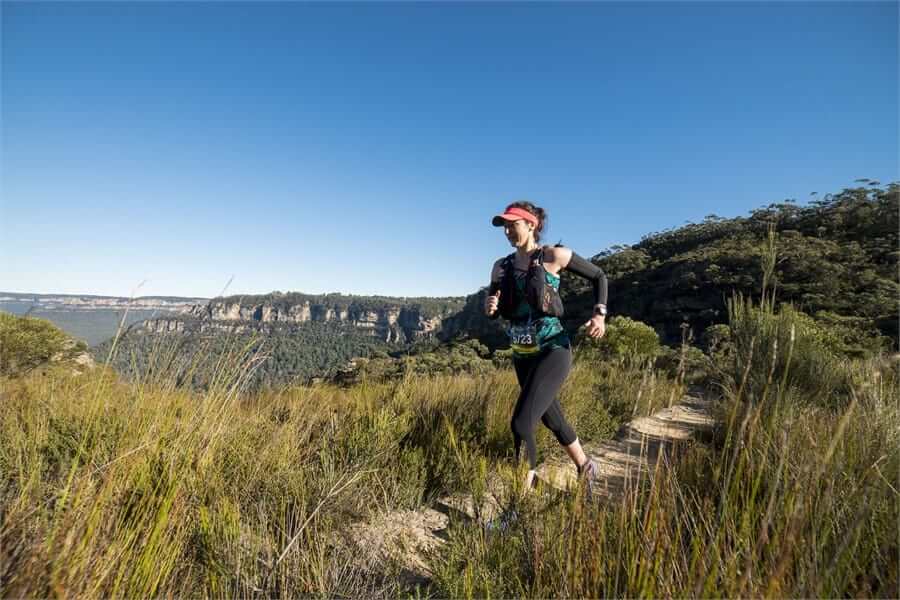
What other gear or equipment do I need to get started trail running? (Ie. Do I need a vest, visor, those fancy socks or giant watches?)
The only other piece of equipment I recommend is a lightweight, waterproof jacket. The weather can change rapidly and dramatically, especially if you’re in the mountains. My jacket stays in my pack year round; I even carry it in summer because you never know what might happen out on the trails and it’s important to be able to look after yourself until help arrives.
And of course you need something to carry your jacket, water and snake bandage in. There are plenty of running backpacks and vest these days. However, if you don’t want to spend any money, have a look in your cupboards; you might already have a small backpack laying around the house that will suffice.
Please don’t let the list of equipment scare you off. If you need to buy it, it will last you for years and the peace of mind it provides you (and your family) is priceless.
What’s the best thing to wear when trail running?
Again it depends on personal preference. I only ever wear t-shirts and long sleeve tops because I have fair skin and sun protection is important to me. However many people prefer singlets over t-shirts. Likewise, some prefer shorts over tights. Avoid cotton and look for clothing that is made from a Coolmax style, technical material. Alternatively merino is a great option that can be worn in summer as well as winter. I have a couple of fantastic merino t-shirts I wear year round.
How do I find WHERE to go for a trail run?
If you have a National Park nearby, you’ll have a trail! National Park offices can be a great resource to find trails in your local area.
Alternatively ask around at any local running groups or running shoe shops in your local area; they are sure to have a few suggestions.
And of course, you can always go exploring and find out for yourself (with the necessary safety precautions of course!)
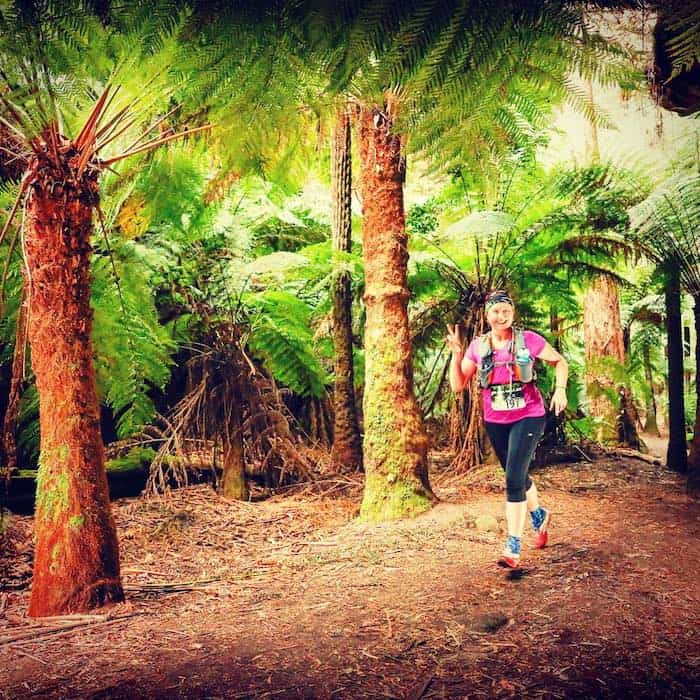
How is running on bush tracks different to running in an urban environment? (Ie. technique) – what key things do I need to be aware of?
Trail running can be harder than running on the road or a footpath, as you constantly need to adjust for the changes in terrain. You might go up a short hill, down the other side, round a tight corner and then climb over a fallen tree — and that’s half the fun.
Trail running is all about confidence. So it can be easy to fall into the trap of watching where you’re placing your feet. But the secret is to watch the trail about 3 feet / 1-2m in front of your feet. This takes confidence but you’ll soon realise your feet know what to do! The more you practice this and the more time you spend on the trails, the more confident you’ll feel.
Remember too – it’s OK to walk the hills. Most trail runners do! And don’t be afraid to stop and walk any technical sections you don’t feel confident running through. Even to call it ‘trail running’ can be a misnomer. You’ll run, walk and sometimes even get your butt and/or hands dirty clambering over trees and rocks. That’s part of the fun!
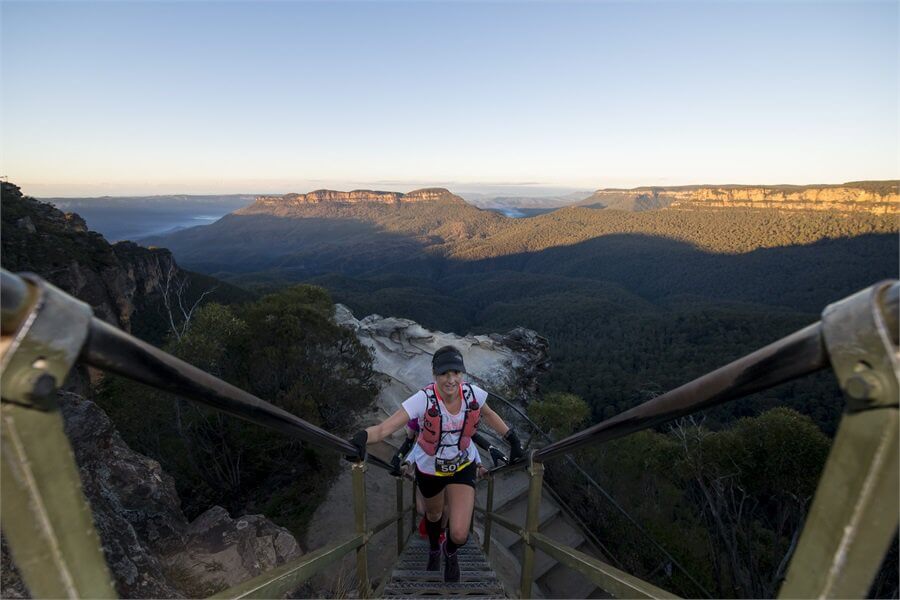
Oh, and one final word of warning – be careful. It’s addictive!
What if I’d like to find some people to go for a run with? Are there clubs or groups I can join?
Absolutely. Look for a running group or club in your area. Often there will be members who are also trail runners or they will be able to point you in the right direction. Facebook is also a great place to search and find local running groups in your area.
Are there any gotchas to be aware of? (Eg: chafing?)
Chafing and blisters are every (trail and road) runners worst nightmare!
Unfortunately, you often don’t know you have a problem until you are in the middle of a run. So you can use a sports lubricant like Sports Shield or Body Glide on potential problem areas when getting dressed in the morning. I am prone to blisters between two toes (just two!) so I apply a lightweight, breathable tape to those spots. Another trick is to carry some band-aids and/or a tube of Paw Paw cream in your pack – that can save the day!
If you’re getting blisters, consider testing out a few different brands of socks. Yes, it can be a slightly expensive exercise at first. But once you find a pair of socks you love, you’ll never leave home without them!
Whether it’s chafing or a blister, the moment you notice a hot spot forming, stop and tend to it. If you’re out with other people, you might be tempted to stay quiet and put up with it, for fear of holding the group up. But doing so is often the difference between a fun day on the trails and a not-so-pleasant day on the trails followed by a week of pain, trying to squish blistered feet into your work shoes.
One of the biggest differences with road running is that your feet are more likely to get wet when you’re on the trail – especially if you love stomping through puddles and across creeks as I do. So foot care is critical!
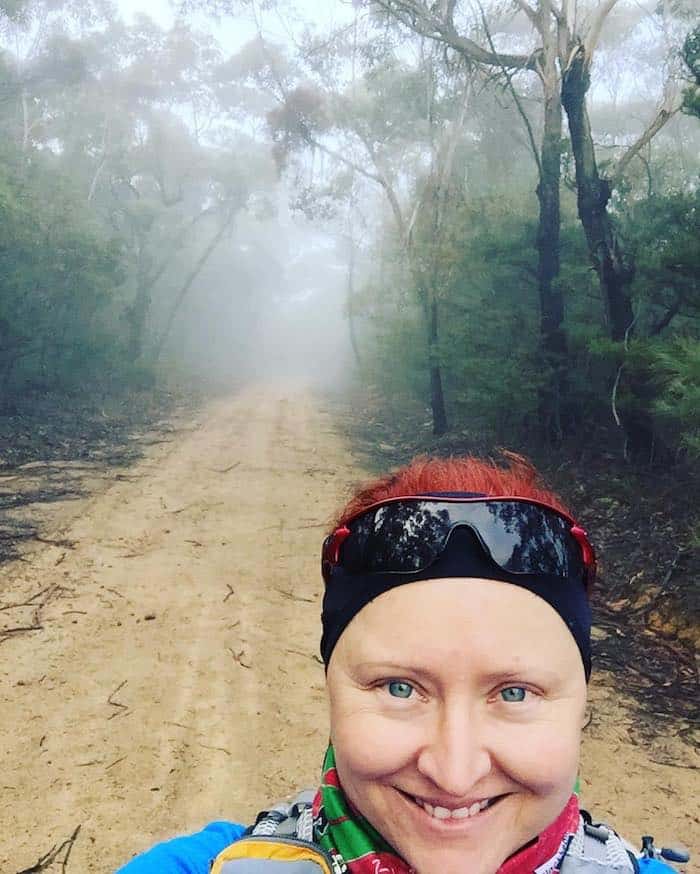
OK, so what else do I need to know before I grab my shoes and head to the track?
Nothing! You are ready to go! Grab your shoes and find a trail. Just remember to tell someone where you are going and when to expect you back.
Jen Brown is a Trail Running and Triathlon Coach, author, speaker and founder of Sparta Chicks, an online community and coaching business that helps women who love endurance sports or outdoor adventures to chase their dreams with confidence. She is also the host of Sparta Chicks Radio.



